Weather updates, Moon, Rocket Contrail,
Possible Aurora
Posted: 12 August 2024
After being mostly clear Thursday morning, 8 August 2024, which allowed me to do some observing and imaging of the Sun, by mid-day the sky was mostly cloudy. Thunderstorms were in the area beginning late afternoon. Only received 0.01" rain here. Shortly after midnight Friday morning, 9 August, had a brief thundershower (0.08"). Late Friday afternoon there was a nice thunderstorm to the northwest (iPhone 15 Pro Max, 0.5X lens).
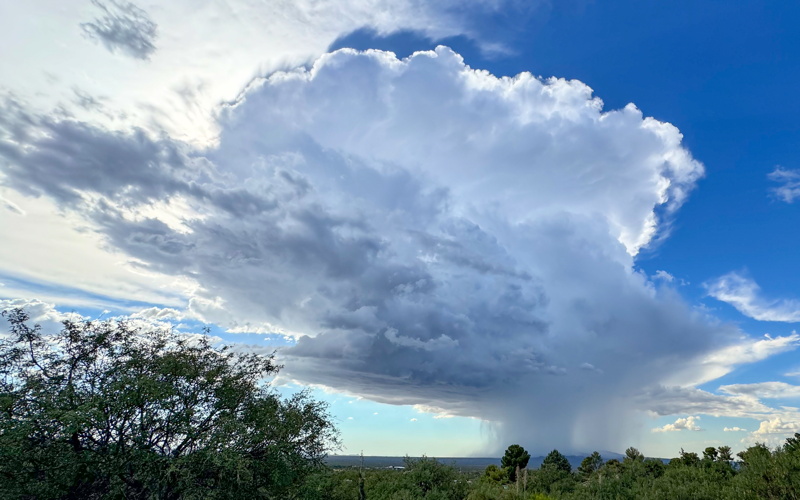
Saturday, 10 August, was cloudy with thunderstorms in the area.
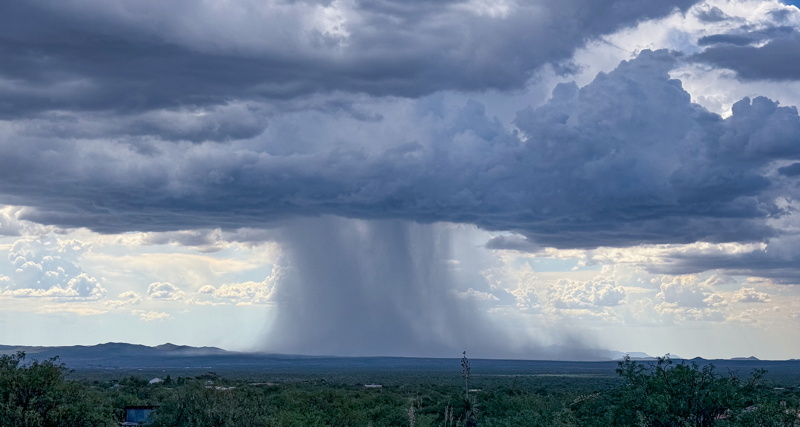
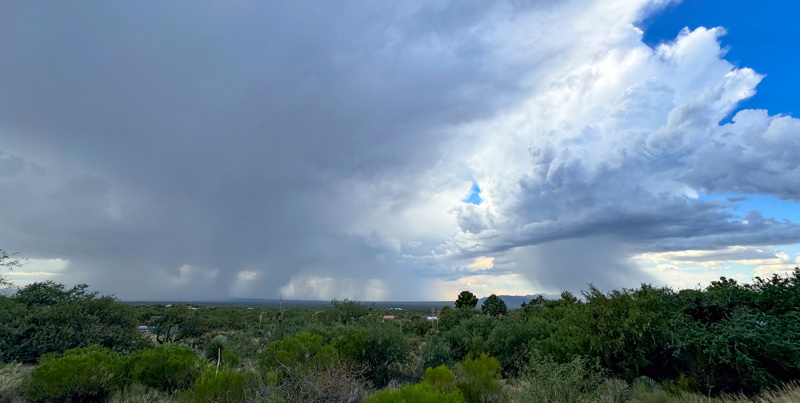
Sunday, 11 August, was partly cloudy, until late afternoon when the sky became mostly clear (it was forecast to be mostly cloudy). I tried to observe a launch of a SpaceX Falcon 9 rocket from Vandenberg Space Force Base, California, but the sky was too bright 10 minutes before sunset to see it.
1912 MST: With the sky mostly clear, I decided to open the observatory for a short lunar observing session. This sunset photo also shows the crescent Moon at the upper left. (The arc is an artifact.)
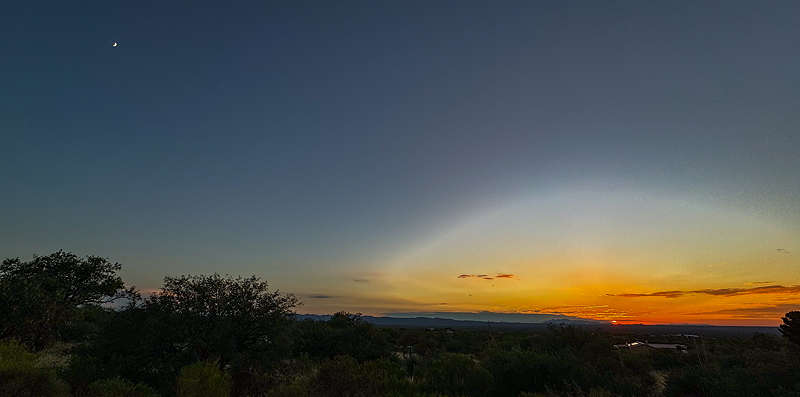
|
Open: Sunday, 11 August 2024, 1925 MST Temperature: 82°F |
Session: 1999 Conditions: Mostly clear |
Equipment:
12" f/8 LX600 w/StarLock
2" 24mm UWA eyepiece
2" 9mm 100° eyepiece
Camera:
iPhone 15 Pro Max
1929 MST: Dome Cover OFF.
1935 MST: LX600 ON, StarLock OFF, High Precision OFF.
SYNCed observatory clock to WWV time signals.
Viewed the planet Venus, very low in the western sky, 102X. A nearly full disk was visible. Atmospheric dispersion was very evident, as seen in this handheld iPhone 15 Pro Max afocal 102X photo taken with the Camera app (1X lens).
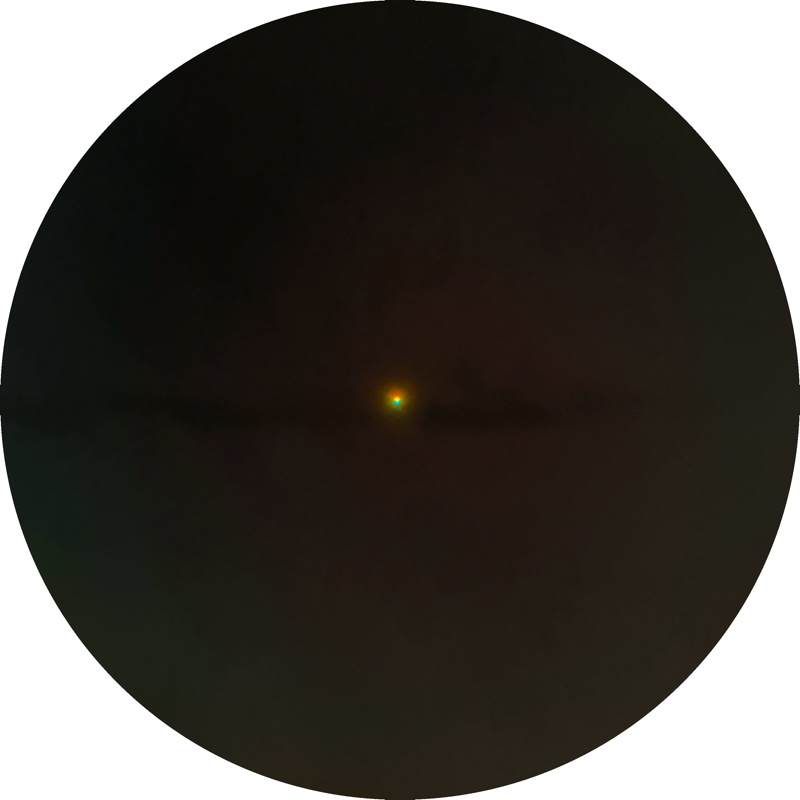
Then viewed the Moon, 102X. Took this handheld iPhone 15 Pro Max afocal 102X photo using the Camera app (1X lens).
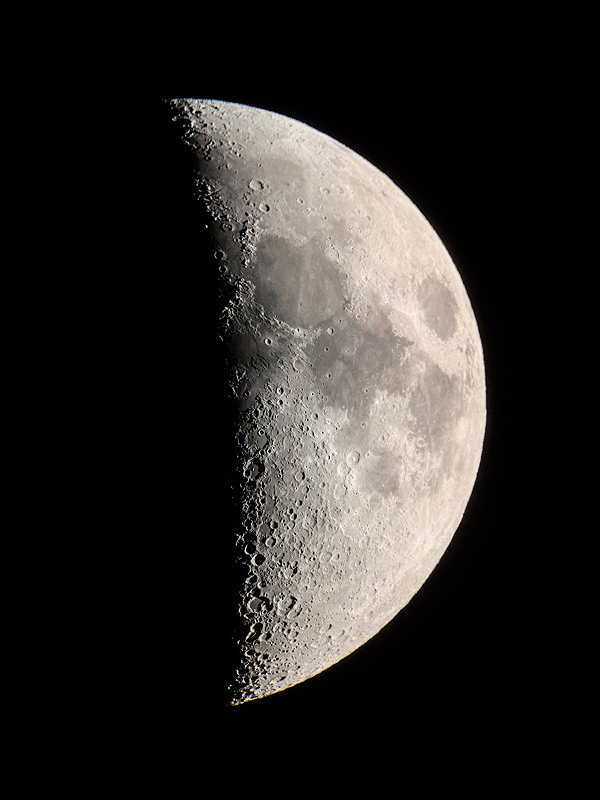
Did some lunar observing, 271X. Took these handheld iPhone 15 Pro Max afocal 271X photos using the Camera app (1X lens).
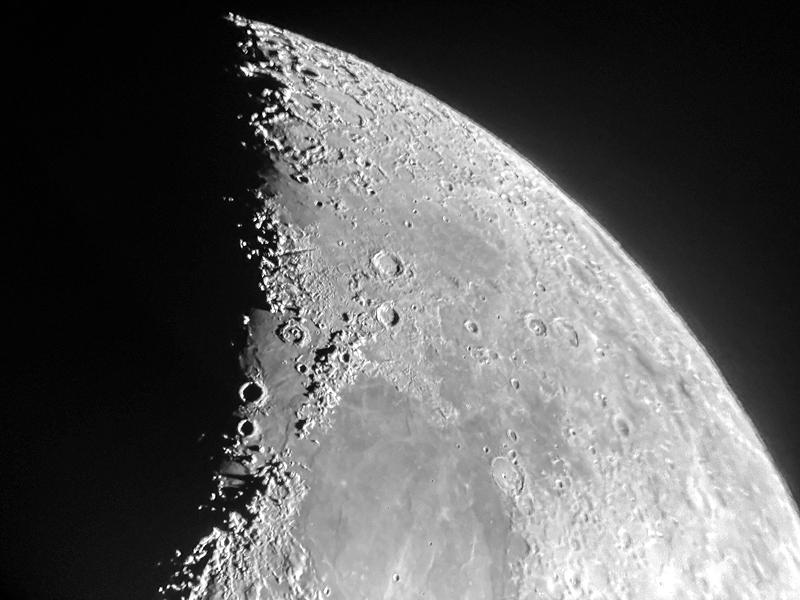
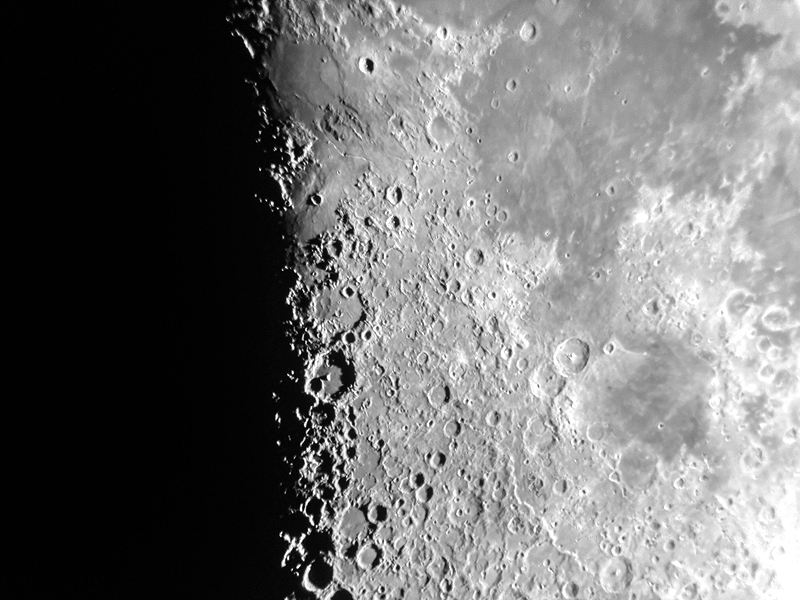
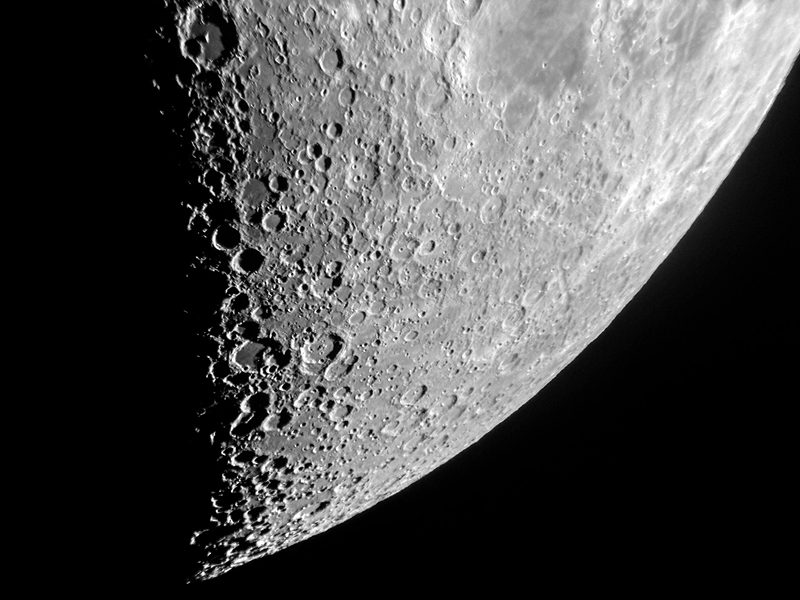
Viewed the Moon with Earthshine, 102X.
2013 MST: LX600 OFF.
Received a text message from a local friend who let me know that the Falcon 9 rocket contrail was visible in the western sky. 2018 MST: I took this handheld iPhone 15 Pro Max photo using the Camera app (0.5X lens) showing the contrail at the lower right and the Moon at the upper left.
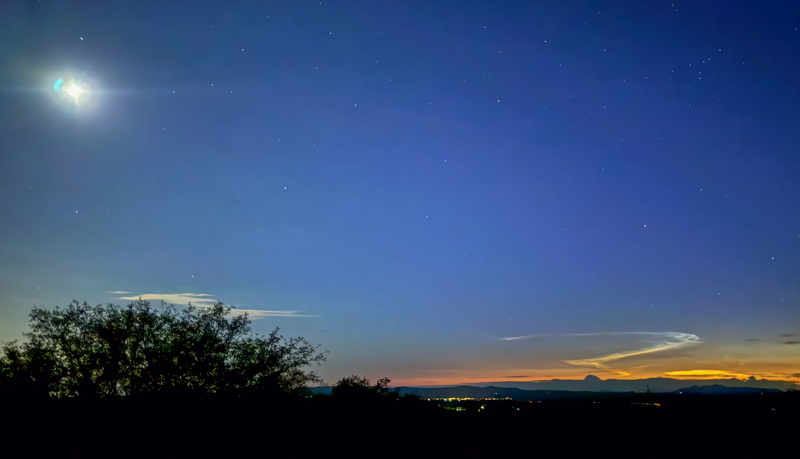
2032 MST: Dome Cover ON. (Monsoon storms were still in the forecasts.)
|
Close: Sunday, 11 August 2024, 2035 MST Temperature: 79°F |
Session Length: 1h 10m Conditions: Mostly clear |
2350 MST: I checked the sky conditions to see if it would be worthwhile to try to see some Perseid Meteor Shower meteors. The sky was cloudy. No meteors were seen. As there were some reports that the Aurora Borealis (Northern Lights) was active, I hoped to see some, but did not.
0145 MST: Checked the sky again; still cloudy. No meteors or Aurora seen.
0250 MST: Checked the sky once again. It was mostly cloudy but there were some stars visible. I took this handheld iPhone 15 Pro Max photo (Night Mode, 3 seconds, 2X lens) showing the Pleiades (top), part of the Hyades star cluster (right), and the planets Mars and Jupiter (below center).
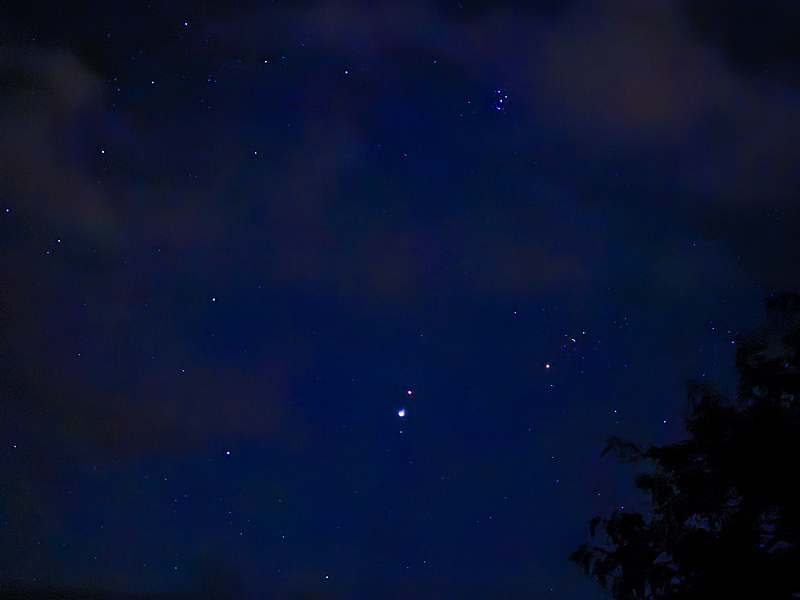
0253 MST: This handheld iPhone 15 Pro Max photo (Night Mode, 3 seconds, 1X lens) shows what might be some purple glow from Aurora low on the northern horizon. There are no ground lights that would have caused the glow.
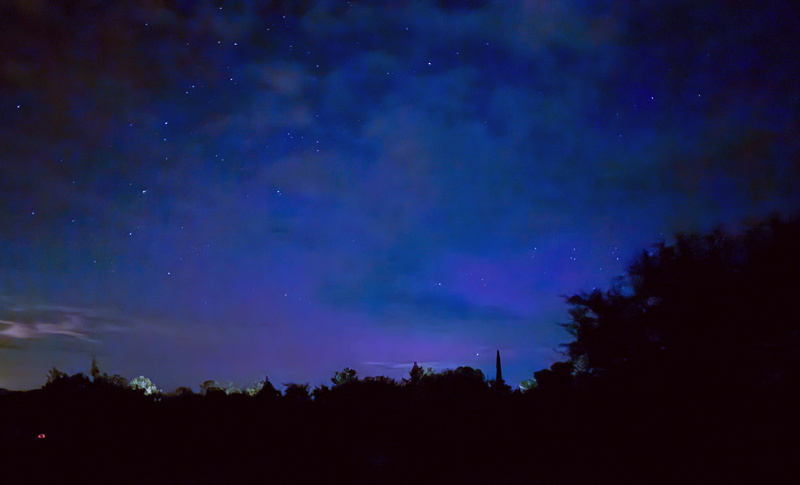
Some Aurora was seen during the night on the Mt Lemmon All Sky Camera, so the Northern Lights were visible (photographically) in Arizona.
Comments are welcome using Email. Please read the Email Etiquette guidance.
Cassiopeia Observatory Home Page
Copyright ©2024 Michael L. Weasner / mweasner@mac.com.
URL = http://www.weasner.com/co/Reports/2024/08/12/index.html
